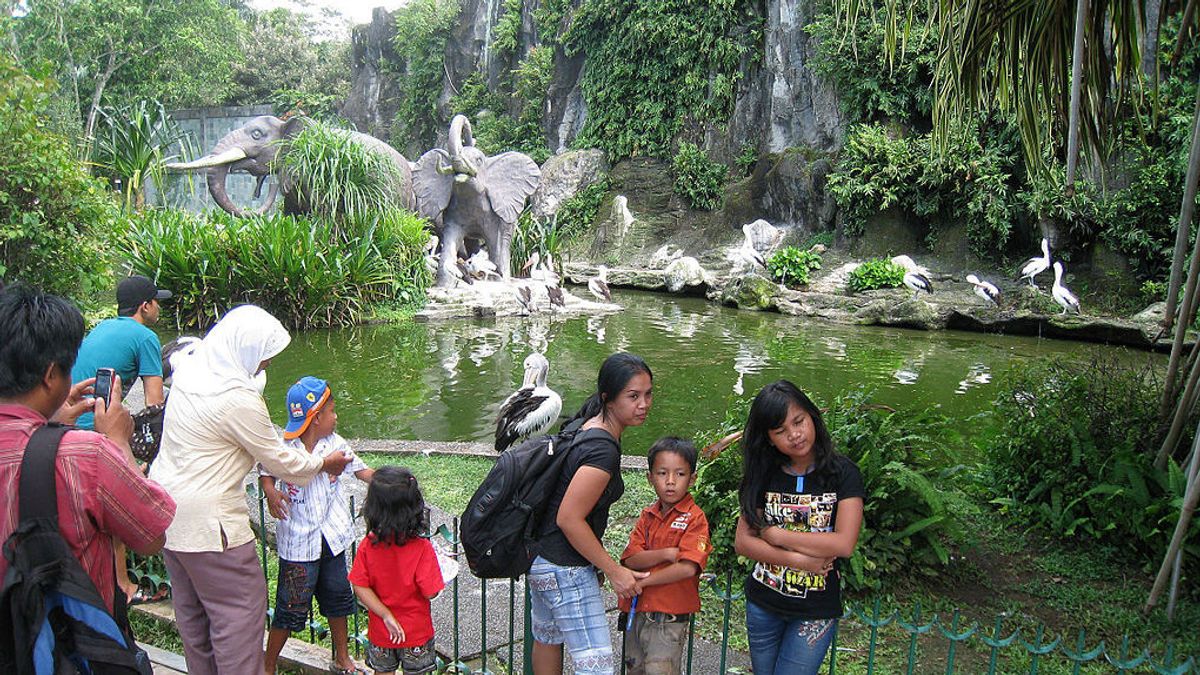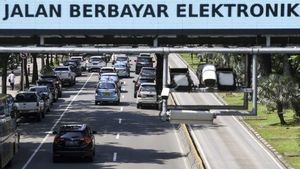JAKARTA - Ragunan is a zoo. Nobody will deny the attachment of this corner of South Jakarta as a tourist area. However, where did the name Ragunan come from? That said, there is the name Prince Wiraguna behind the name Ragunan.
The fire at the palace of Sultan Ageng Tirtayasa, Karaton Surasowan in Banten in 1675 attracted the heart of a young man born in Steenwijk (Netherlands), Cardeel. He came to help the Kingdom of Banten. Cardeel at that time claimed to be a builder who was running away from Batavia because he wanted to embrace Islam.
Sultan Ageng sympathized with Cardeel and gave him a job: restoration of the palace. Quoted from Denys Lombard's book, Nusa Jawa: SIlang Budaya Volume 1 (1996), Cardeel's name was mentioned for the first time in Caeff's report, March 1675.
Caeff, who is the representative of the Dutch trade association, the VOC in Banten, noted that Cardeel, a bricklayer, came to offer his services when a fire had just hit the Surasowan Palace. Sultan Ageng rejoiced at Cardeel's arrival. Incidentally, Sultan Ageng is in need of an experienced mason.
Afterward, Cardeel was assigned to lead the construction of palaces and other buildings, including a dam and a resting palace upstream Ci Banten. Unexpectedly, after the construction was led by Cardeel, all of Sultan Ageng's attention was diverted to development activities.
Sultan Ageng's thoughts were then consumed until he no longer occurred to him about the military movement to Batavia. As a result, the son of Sultan Ageng, Sultan Haji, kept insisting that he immediately be crowned the new Sultan.
As a result, there was a war over the throne of father and son. Due to his increasingly pressing presence, Sultan Haji tried to send an envoy to Batavia to ask the Company for help.
Later, one of those he sent was Cardeel. With Cardeel's services, Sultan Haji then received support from the VOC until he won and became the new king of Banten.
As a form of gratitude for Sultah Haji, Cardeel then received the title of prince Wiraguna and obtained a number of lands. Uniquely, because of his closeness to Banten's number one person, Cardeel also received permission to marry one of Sultan Ageng's ex-wives.
“He married one of Sultan Ageng's ex-wives and remains the owner of a large job (opsigter over de werkwn en het arbeijtsvolck). Interesting little thing: he who has never been able to read Latin letters, is now starting to learn Javanese script, "said Denys Lombard.
Cardeel's trail in BataviaSlowly, Cardeel began to feel uncomfortable in Banten. Banten people who initially supported Cardeel's existence, disliked him more and more. Because of this, Cardeel then said goodbye to the sultan on the grounds that he was going to return to the Netherlands so that he would immediately get permission.
However, Cardeel did not actually return to the Netherlands. As revealed by Windoro Adi in the book Batavia 1740: Combing Betawi Footprints (2010), Cardeel chose to stay in Batavia.
In Batavia, he became a wealthy landlord. It is recorded that Cardeel lived in Batavia as an ordinary citizen (burger) and returned to his religion from Islam to Christianity in 1695. During his time in Batavia, Cardeel was the head of the Blok M region (wijkmeester) and worked on a small forest he owned in southern Batavia, Ragunan.
Later, Cardeel teamed up with a surgeon, Philip Gijger, to build a water wheel to a sawmill near a large river. There, he also made crates for sugar cane export.
Due to his dexterous work as a construction expert, the Municipal government assigned him to repair several waterways damaged by the earthquake. Cardeel was awarded a wage of 150 ringgit in 1699.
However, in 1706, Cardeel retired from making chests and immediately switched to producing charcoal to be sold to VOC-owned arms factories as a raw material for gunpowder. Because his wife in Banten did not want to live in Batavia, Cardeel remarried Anna Stratingh without having any children.
When Cardeel felt that his end was approaching, he then adopted the son of an Indo young man named Lucas, who was the son of his friend, Hodenpijl. Cardeel also freed Hodenpijl's mother, Magdalena from slave status.
The move was the last form of kindness Cardeel could do before he passed away in 1711. The name Pangeran Wiraguna was later immortalized as the name of the Ragunan area. The first immortal landlord in the region.
"The name Ragunan comes from Prince Wiraguna, which is the title held by the area's first landlord, Hendrik Lucaasz Cardeel which he obtained from the Sultan of Banten Abunasar Abdul Qahar or commonly called Sultan Haji," wrote Rachmat Ruchiat in the book The Origin of Place Names in Jakarta (2011 ).
The English, Chinese, Japanese, Arabic, and French versions are automatically generated by the AI. So there may still be inaccuracies in translating, please always see Indonesian as our main language. (system supported by DigitalSiber.id)








